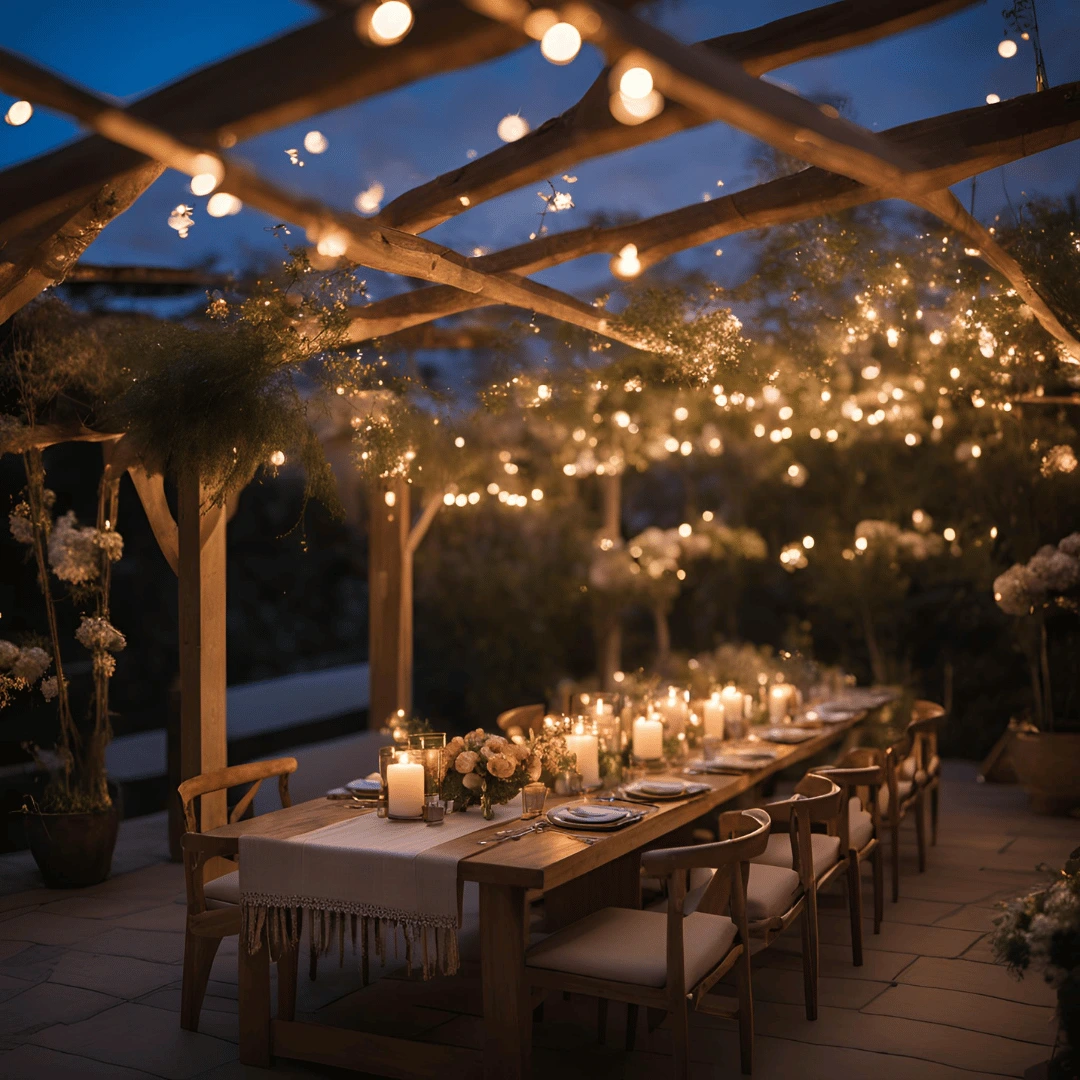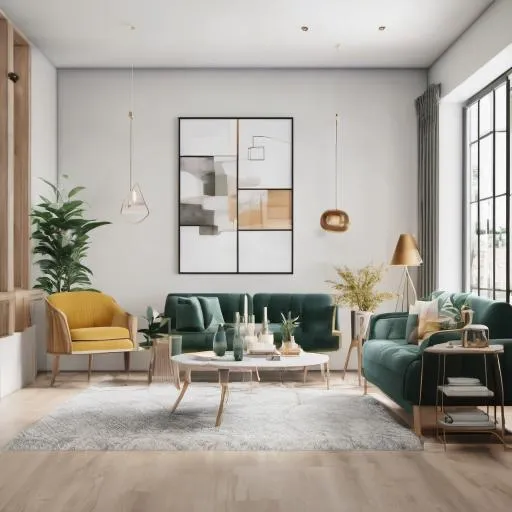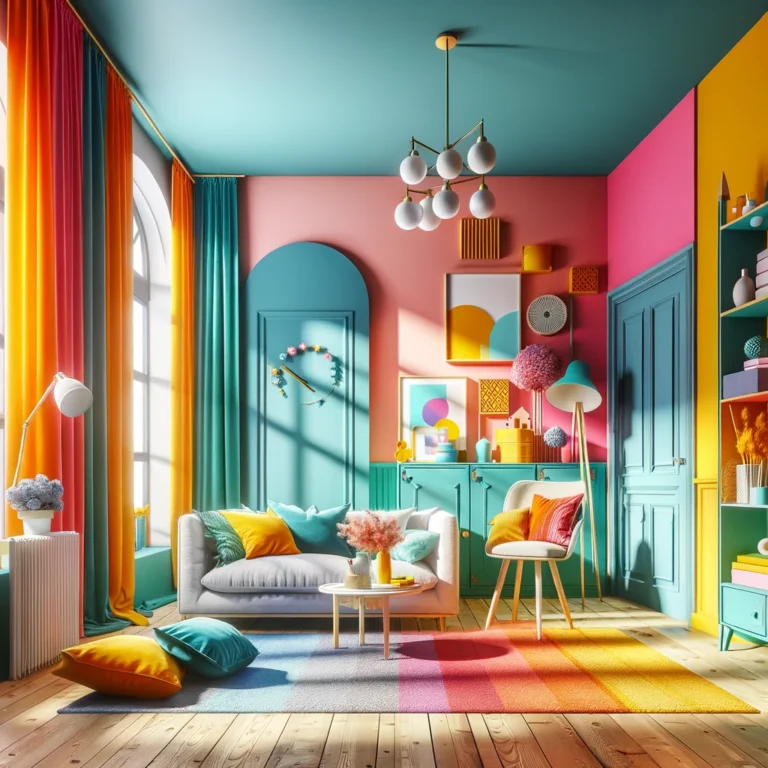Have you ever stopped to think about how the past weaves itself into the present? What if a custom that began in the deserts hundreds of years ago could change the way you feel about your home now? Al Sadu weaving is more than just an art form. It’s a tapestry of stories, culture, and tradition, from the steady hum of the loom to the bright play of geometric patterns. But how does something that is so rooted in history fit into a sleek modern room? And why should we care about keeping these pieces of history alive in a time when everything is so easy to make? Let’s find the answers as we look at the timeless beauty of Al Sadu weaving and the surprising ways it is used in modern interior design.
Understand Al Sadu Weaving
The History and Roots of Al Sadu Weaving
Al Sadu weaving is an old Bedouin art form that shows how people in the Arabian Peninsula used to live as nomads. This method has been around for a long time and comes from the dry deserts. Bedouins used it to make tents, rugs, and saddlebags for camels. But it was never just about how useful it was. Each thread, color, and design told a story, sent a message, or represented a tribe’s identity.
The items that were used were also real; they were often found in the desert. To make these beautiful fabrics, threads were made from sheep’s wool, goat’s hair, and even camel hair. That each strand was there showed how clever the Bedouin were.
Techniques were passed down from one family to the next, and women often learned how to do the work as part of their culture. Their hands made intricate patterns out of raw fibers, like zigzags, diamonds, and animal shapes that were made to look like real ones. These designs showed how spiritually connected they were to nature.
Important Things
Bedouin culture is where al Sadu weaving gets its roots. It is both useful and meaningful.
Sheep wool, goat hair, and camel hair are all traditional products.
The skill has been passed down from generation to generation, which keeps it real.
How the Sadu Weaving Works
The process of making Al Sadu textiles is very careful and requires skill, patience, and imagination. The fibers are spun into threads as the first step. A simple hand spindle is used by artisans to twist the threads, which sets the stage for weaving.
A portable ground loom is used for the spinning, which fits the Bedouin’s nomadic way of life. Artists sit on the ground and carefully guide the threads to make the complex geometric and surreal designs that Al Sadu is famous for. Each pattern has its own meaning. For example, diamonds stand for safety, while zigzags might represent sand dunes.
The methods and tools may look simple, but the end result is anything but. Each piece is a beautiful work of art because of the bright, clashing colors, which are usually red, black, white, and beige.
Important Things
Spinning, setting up the loom, and making patterns are all parts of weaving.
Based on Bedouin culture, patterns often have hidden messages.
Al Sadu blankets stand out because of their bright colors and geometric patterns.
Problems that come up using Al Sadu weaving in interior design
Not understanding the importance
It’s a big problem that not enough people know about Al Sadu’s past and importance. A lot of people just see it as another piece of decor and don’t know the cultural meanings behind it. Because of this misunderstanding, design can be skewed, and the craft’s soul can be lost in translation.
When mass production takes over, individuality is often lost. What started out as a labor-intensive, deeply personal work can turn into a general product that has lost its cultural soul.
Authentic Al Sadu weaving products are hard to get.
Real Al Sadu pieces are very valuable. Finding real Al Sadu goods can be hard because there aren’t as many artisans who can do the work anymore. Because these pieces are so carefully made, they are also very expensive, which can turn people off from buying them.
Also, getting real materials like camel hair or raw wool adds another level of difficulty. As a result? There aren’t many Al Sadu linens on the market today.
Concerns about sustainability
As more people try to live in a more environmentally friendly way, questions come up about how knitted textiles affect the world. Al Sadu has always been eco-friendly because it uses natural fibers, but when it makes a lot of clothes, it uses synthetic materials that are bad for the earth.
It is very important to find a balance between history and new ideas. The designers need to find ways to make Al Sadu last without changing what makes it special.
How Al Sadu Weaving Can Be Used in Modern Interior Design
Getting across cultural gaps in design
The first thing that needs to be done to close cultural gaps is to teach designers and the public about Al Sadu’s long past. By working with skilled craftspeople, designers can make items that are true to the craft.
Design can also be used to tell stories, like using Al Sadu to tell culture stories in a way that modern people can understand.
Important Things
Working with artists makes sure that the culture is kept alive.
Teaching and sharing stories help keep Al Sadu’s history alive.
Bringing people from different cultures together helps them understand and value the craft.
Finding and Making it Accessible
Fair trade networks and artisanal shops are very important for making Al Sadu easier to get to. By supporting these projects, you can make sure that artists get paid fairly for their work.
Concerns about the environment can also be addressed by using eco-friendly materials like organic wool or recycled fibers. Also, advances in technology may make real Al Sadu cheaper.
Important Things
Fair trade helps artists and makes goods more available.
Materials that last a long time help protect the earth.
Al Sadu can be more cheap with the help of new technology and ideas.
Using Al Sadu weaving in a range of design styles
When used carefully, al Sadu can be used in a lot of different ways. A single Al Sadu cushion or wall hanging can be a bold addition to a simple room. Its bright colors and textures are a big part of boho and eclectic styles, which gives them a layered, artistic feel.
For traditional rooms, Al Sadu can be a culture focal point, like hand-woven rugs or textiles in frames. If you put Al Sadu with sleek elements like metal or glass, it can look great in a modern high-end setting.
Important Things
Al Sadu is a bold accent that looks great in minimalist rooms.
Its bright colors go well with boho and eclectic styles.
Al Sadu weavings can give traditional and high-end rooms a culture touch.
Design that is sustainable and eco-friendly
Al Sadu’s natural fibers are a good fit for eco-friendly design ideas. Designers can make designs that are both stylish and good for the environment by using biodegradable materials.
Using Al Sadu in energy-efficient homes, like with natural rugs that make homes warmer, can also make it more popular in green design.
Important Things
Sustainability is a big deal at Al Sadu.
Biodegradable materials are better for the earth.
It goes well with eco-friendly and energy-efficient designs.
In conclusion
Al Sadu weaving is more than just a skill; it’s a vibrant link to our rich cultural history. It’s a great addition to modern rooms because of its detailed patterns and long-lasting look. By buying from artisans and carefully incorporating Al Sadu into our homes, we not only honor custom but also welcome new ideas that will help us live in the future.
Don’t just look at the beauty of an Al Sadu piece the next time you see one. Think about its past, the people who made it, and the stories it holds. Add it to your room as more than just decoration; it’s a living piece of history.
FAQs
1. How does Al Sadu weave?
Al Sadu weaving is a traditional Bedouin art form that uses natural fibers like wool, goat hair, and camel hair to make geometric designs on fabrics.
2. In what ways can Al Sadu be used in modern homes?
Al Sadu can be used as accent pieces, rugs, wall hangings, or furniture in a wide range of design styles, from modern and simple to eclectic and traditional.
3. Is Al Sadu good for the environment?
Yes, traditional Al Sadu is made from natural, biodegradable materials, which makes it a good choice for green homes.
4. In what stores can I find real Al Sadu goods?
You can find real Al Sadu things at artisanal markets, through fair trade networks, or by working with skilled weavers in places where the craft is still done.




